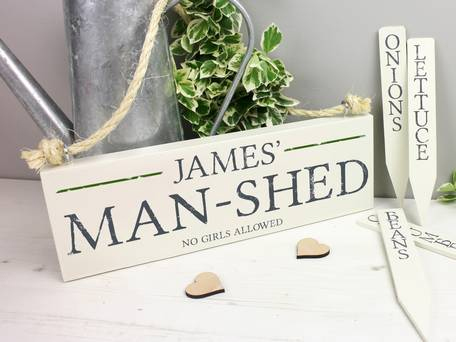We may have had storms and rain, but while the ground’s workable, gardeners should make the most of the time they have left to do the jobs which will give them a head start next year.
Whether it’s revamping your lawn, dividing perennials, trimming hedges, clearing weeds or preparing the greenhouse for winter, you should leave no stone unturned if you want to get things in order for spring.
Don’t delay in completing these tasks:
– Plant new trees, shrubs and roses. These should benefit from the warm soil, which encourages root growth to develop quickly. You will need to give them a good soak when planting initially, but hopefully rain will play a part too. Just keep an eye on newly-planted specimens and don’t allow them to dry out if we don’t have wet weather. The plants should establish over the winter, giving you a head start for spring. Revamp your lawn. With all the autumn rain we’ve had, the ground will be soft enough to either turf or reseed a new lawn, or repair an old one. If you are laying new turf, good preparation is the key, which will mean removing weeds and stones, digging over the soil, adding compost or well-rotted farmyard manure and incorporating sharp grit on heavy soil, and levelling the area off to a fine tilth on which to sow seed or lay turf. It needs to be kept well watered, although the rain should help at this time of year, and seed needs to be protected from birds with netting, elevated by placing shortened twigs or canes around the area and securing the netting to them.
– Divide perennials. Now is the perfect time to split those plants which have become congested while they are dormant but before the ground becomes too hard to dig them out. Perennials which benefit from dividing every few years include hostas (but you’ll need a knife to cut through the thick roots), cranesbill geranium, montbretia, rudbeckia, helenium and aster. You can also move plants which aren’t happy in their allotted space to a spot where they may be happier.
– Trim hedges, tidying evergreens which should remain neat until spring. Evergreens should not put on much new growth during winter, so should save you the job of pruning them in spring, when you may risk disturbing nesting birds. Deciduous shrubs can be pruned into winter.
– Weed out the worst culprits. If you do a final weed before the perennial weeds disappear for the winter, you should hopefully make your task lighter when they come back in spring. Look out for ground elder, couch grass and bindweed, which are among the most pernicious weeds and try to dig up all the white roots which, if left in the ground, will just sprout up again next year.
– Increase your stock. Take hardwood cuttings in late autumn to propagate shrubs including roses, willows, philadelphus, weigelas and dogwoods. Cut woody shoots for the base of the current year’s growth, trim below a leaf joint and remove the tip to leave the cuttings 20-30cm (8-12in) long. Dip the base into hormone rooting powder, make a slit trench in a well cultivated but vacant area of the garden, push the cuttings in vertically, 30cm (12in) apart and firm the soil back around them, closing the trench. Water them in. This time next year they may have rooted enough to be moved.
– Spruce up the greenhouse. If the weather’s still sunny, there’s no better time to wash the windows, remove the shading, clean the staging and do any structural repairs needed. Then you can insulate the greenhouse with bubble wrap in preparation for winter. A cleaner greenhouse may encourage you in the coming months to sow hardy annuals and perennials for the year to come.
Best of the Bunch
Callicarpa
Autumn may be famous for its rich foliage colours of yellow, burnt orange and deep red, along with bright red, yellow and orange berries – but there’s a place for purple in every garden and the Callicarpa bodinieri giraldii ‘Profusion’ makes an eye-catching change. Also known as the beauty berry, this deciduous shrub which grows 3m x 3m has upright branches with large, pale green leaves which are tinted bronze in spring. Following pale pink flowers in midsummer, it produces clusters of shining, bright violet beads which stay on the bare branches after leaf fall. It likes full sunshine or dappled shade in well-drained, fertile soil. The more you plant, the better the fruiting is likely to be.
Good Enough To Eat
Sowing hardy peas
Now is the time to sow the hardiest pea varieties such as ‘Douce Provence’ and ‘Feltham First’ for a very early crop next spring. Start them off in a spare border in the greenhouse in well-drained soil, or sow seeds in a length of old guttering drilled with drainage holes along the base. Fill to the top with seed compost and space the seeds 7.5cm (3in) apart. Keep them in the greenhouse or a cold frame, keeping the compost moist and transplant them into the garden once they’ve established, digging out a shallow trench and gently sliding the seedlings into it. Cover seedlings and plants with cloches. Rows should be 30cm (12) apart and protected from birds with netting, and you’ll need to add twiggy supports to stop slugs feasting on the young stems. Keep the crop well watered and weed free. Peas should be ready for picking by May.
– Dig up Jerusalem artichoke tubers as required, which can be done until spring. Leave a few to produce next year’s crop. In cold areas protect the crowns.
– Clear out and take under cover decorative containers that aren’t frost hardy.
Prune climbing and rambling roses roses and cut back hybrid tea roses to reduce damage from windrock.
– Prune wisterias to ensure and increase flowering next year.
– Consider installing a pond heater to keep a small area of water ice-free if you keep fish.
– Check your bonfire pile for hedgehogs and toads hibernating in there. If there are, leave them in peace.
– If pots are too large to bring inside, insulate them from the cold using bubble wrap or horticultural fleece.
– Remove yellowing leaves from Brussels sprouts and other winter brassicas such as cabbages and broccoli. They are of no use to the plants and encourage diseases such as botrytis.
– Finish planting spring cabbages.
– Empty compost bins of well-rotted compost to mulch over borders.
Read this and more articles on the Belfast Telegraph




